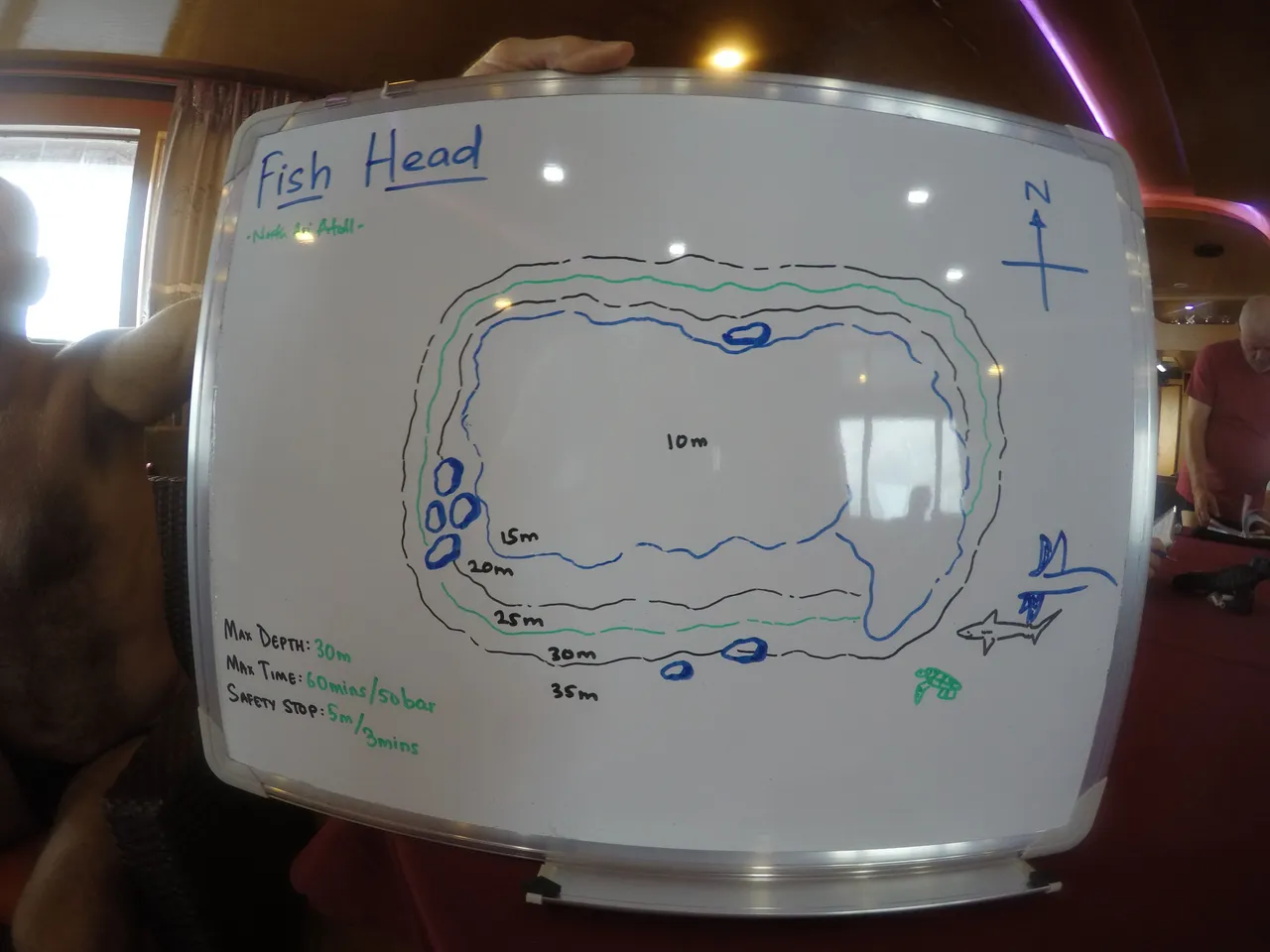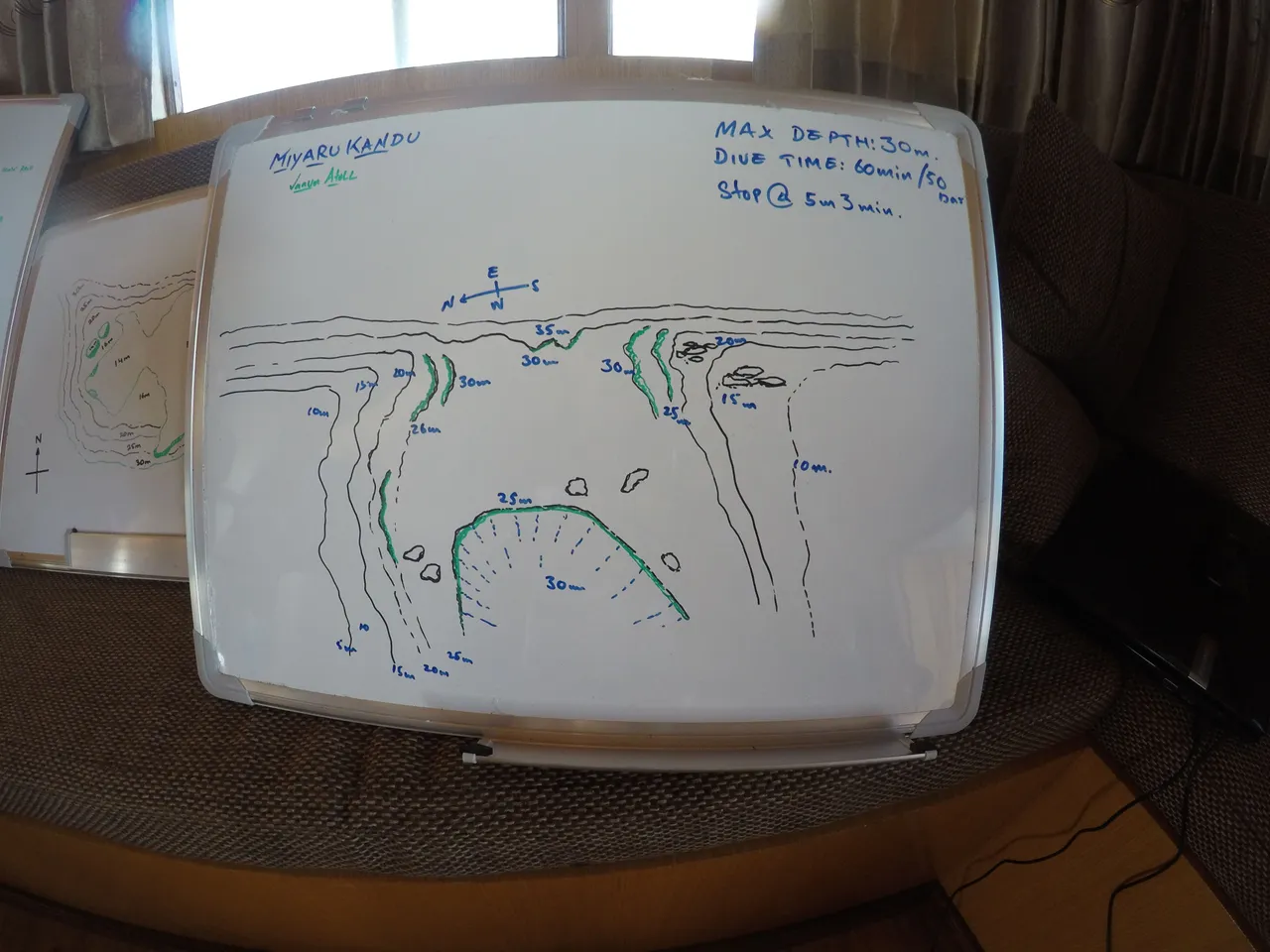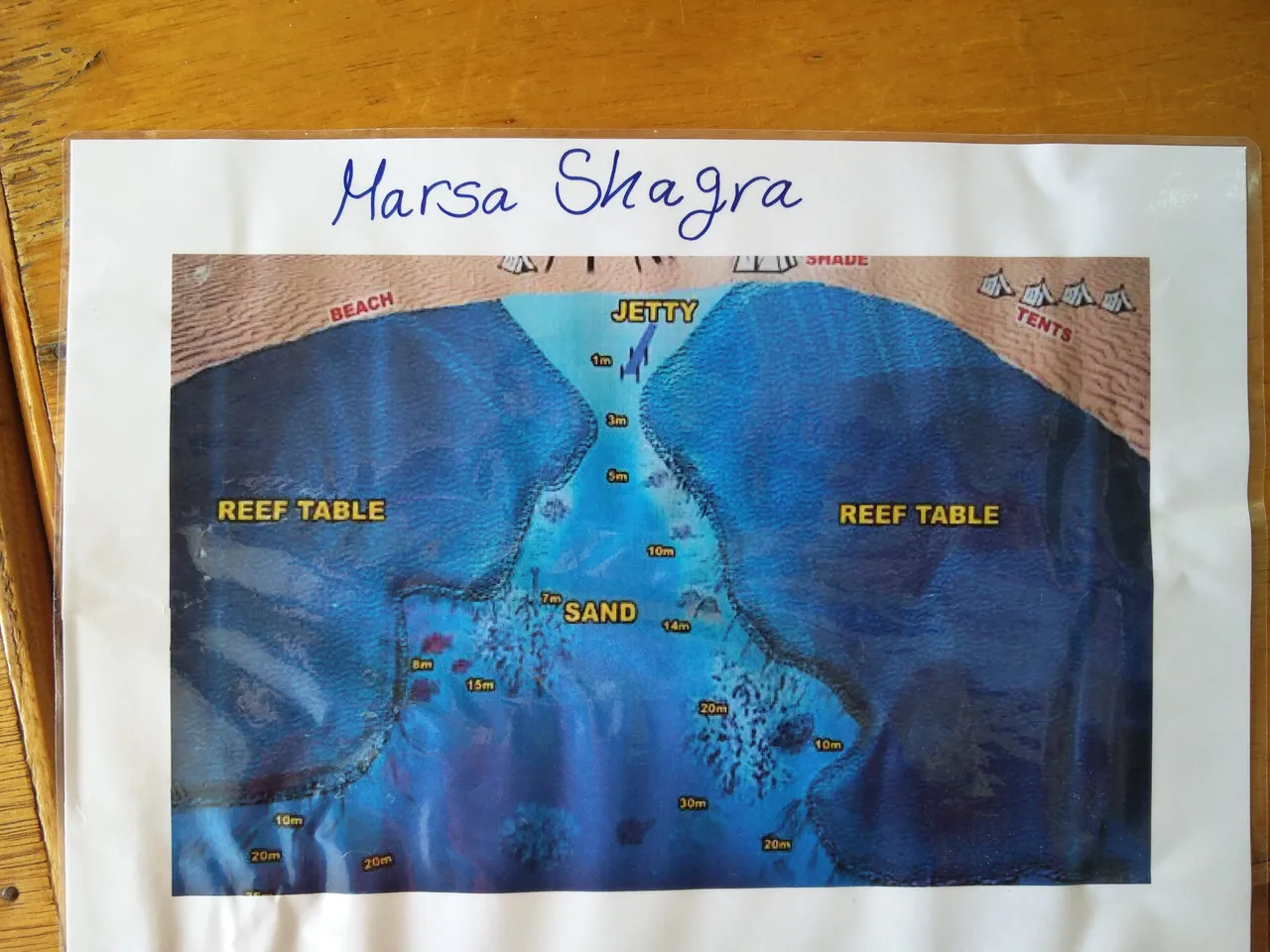Every open water dive has a briefing before the dive. Here in Belgium at a quarry or lake its a brief discussion with your buddy about who takes the lead, dive time, dept and direct. We all know the dive locations, know who has the 100% oxygen in his car and know our buddy so it only takes a minute.
When diving abroad or in open sea a briefing is very import, should be thorough and can save your life. The dive master makes a drawing or has a map and describes the dive site and dive plan. It doesn't matter if you have a guided dive or dive on your own with a buddy, you should listen and know the dive plan 100% .
In case of a guided dive a briefing informs you about what to expect, how the dive site looks like and what the emergency procedures are. You never know what will happen: your dive guide can have problems or has to go up with another diver in problems, you can loose sight of the group, a strong current can scatter the group, ...
When you dive alone the briefing is extra important because you and your buddy have to navigate by yourself. Where is the reef, how does the reef looks like, how much current is there, where is the current coming from, what is the maximum dept, will the boat move and wait at another place, what's the maximum dive time before they start to worry, where are the sharks, ...
Here are some typical examples of briefing drawings of dives I made:

Shark alert, yes we found them!!! :-)



I remember one case were I was sloppy. On my first dive on my first live-aboard I didn't pay that much attention to the briefing.
I was appointed an experience buddy, was used to dive with a guide or instructor and trusted on my buddy's guidance. But my buddy misunderstood the direction of the reef we had to follow and we ended up on the other side of the reef, upcurrent with the waves smashing us against the reef. A zodiac had to come and drag us out of there. Since then I'm always concentrated for the briefing and I ask questions when something is unclear.